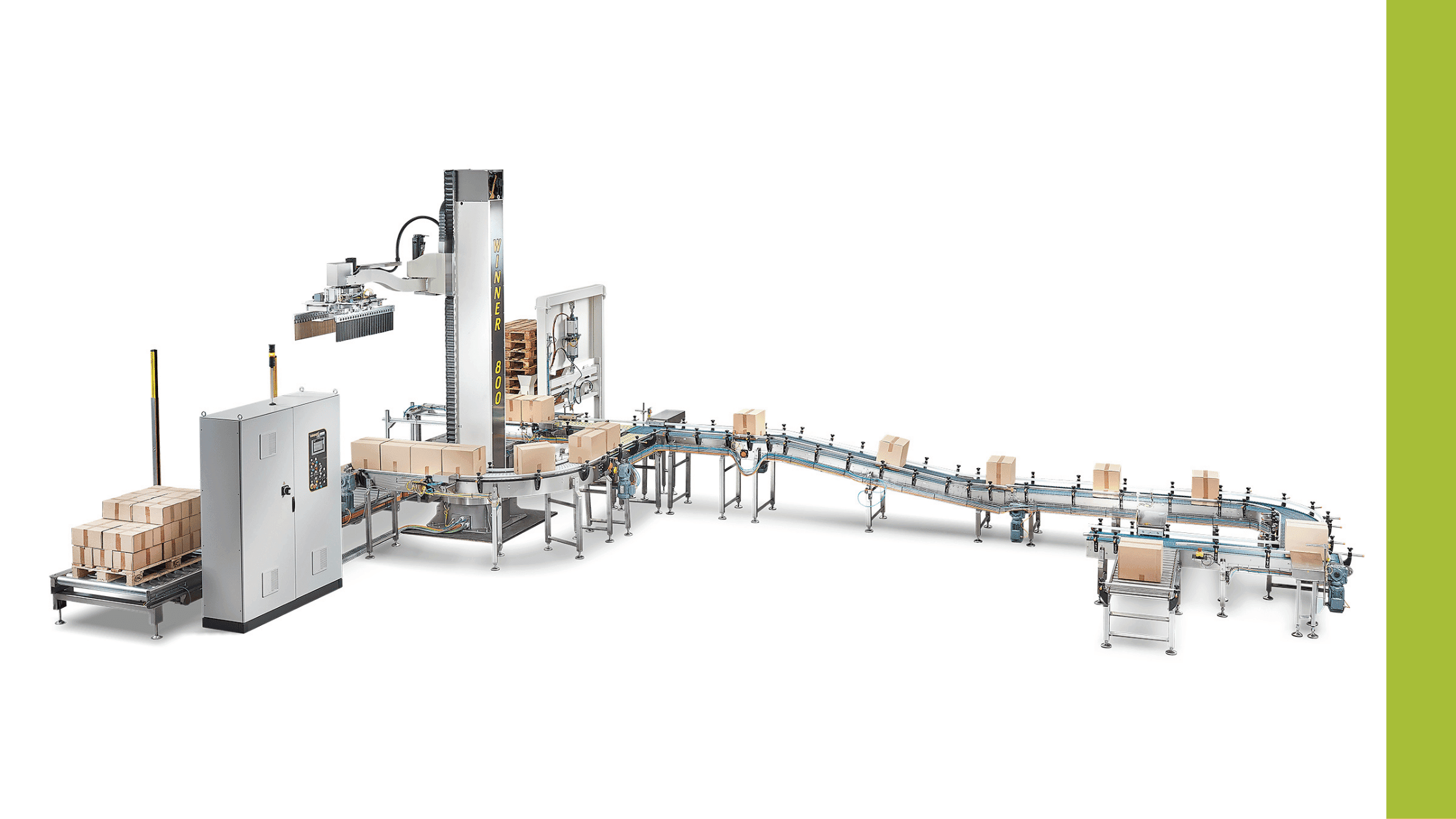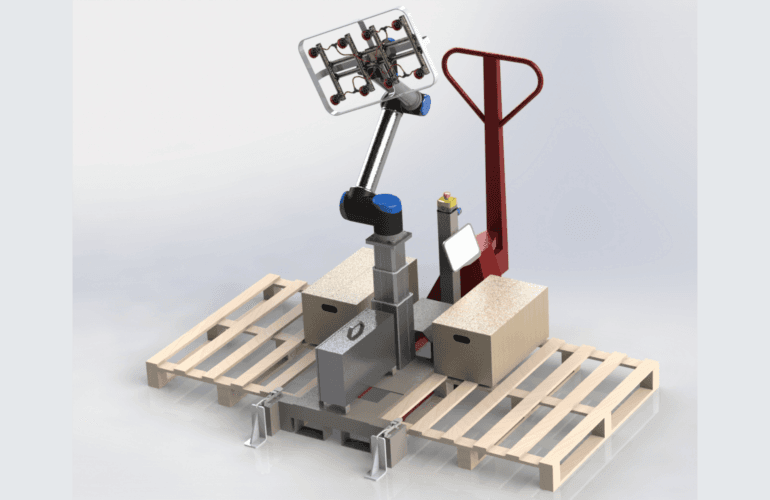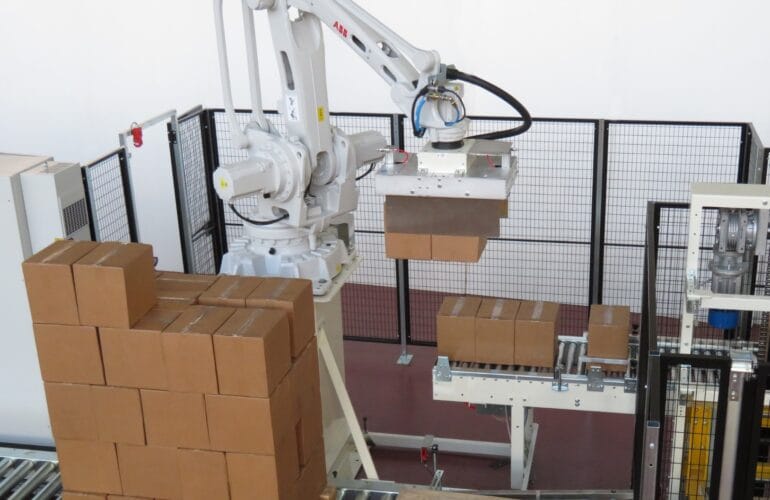As manufacturers face growing customer demands, rising costs and squeezed margins, they’re increasingly searching for ways to improve their processes and set themselves apart from the competition.
For many, this differentiation comes in the form of automation. Adding robotics into a production line can increase speed and efficiency, improve staff morale and reduce absences, giving a clear competitive advantage.
Globally, it’s predicted that robot installations will reach almost 570,000 in 2022, but these installations can vary significantly in terms of the machinery and technology employed. From handling systems to palletisers, automation can take many forms and, in this blog, we take a look at some of the options and the benefits they can bring.
1. Improved efficiency
For many repetitive tasks, a machine can work faster than a human – and if the job is transporting heavy items, it’s likely a machine will also be able to move a greater volume too. This means more can be done in the same timeframe, whether that’s shifting goods, filling sacks or packing pallets.
A good example of this is palletising, the time-consuming, labour-intensive and often monotonous job of sorting, transferring and stacking goods onto a pallet. Automatic palletisers speed up this process – layer palletisers have an output of up to 60 packs per minute and can handle those heavy or awkwardly-shaped packs that can be difficult to move.
Automation can also help remove bottlenecks along the production line, improving efficiency and throughput, and allows you to plan ahead with more certainty. Machines work consistently regardless of the season, holidays or illness, so you can manage peaks and troughs and maintain productivity regardless of external influences.
2. Reduced costs
Automation can help to reduce costs in a number of ways.
a. Reducing wastage
Where your production line includes jobs that are difficult or time-consuming for human employees to complete accurately and consistently, investing in automation can significantly reduce the number of mistakes that cost time, materials and ultimately money.
For example, sack filling machines fill bags to the right level in seconds every time, so customers receive a more consistent product and fewer materials are wasted.
b. Lower staffing costs
There are also savings to be made on wage bills. Not only are fewer people needed once processes are automated, using machines for repetitive or menial tasks also reduces the likelihood of staff absence through injury or low morale.
c. Operational savings
Although automation requires capital investment, never machines may be cheaper to run than more outdated systems.
Europack’s Winner Green range of palletisers use up to 70% less power than conventional robotic palletisers, thanks to the innovative KERS energy-saving system. Similar to the energy regeneration system on hybrid cars, instead of dispersing the kinetic energy in the form of heat during braking, it is partially recovered as electric power, cutting down on running costs significantly.
4. Better staff management
A report by McKinsey found that 64% of total working hours in the US could be automated, saving around $2.7 trillion dollars of labour costs. However, while (as mentioned in the previous section) there are savings to be made on wage bills in the short term, a longer-term view is to reinvest employee time and resources more strategically.
Automating the more repetitive and labour-intensive jobs frees up employees to work in other areas of the business more suited to their skills. This might not reduce labour costs so significantly, but it delivers better value.
Future-proofing
Contrary to popular belief, successful automation isn’t about replacing hard-working, committed workers with robots, simply to save money. It’s about carefully choosing the technology that can deliver the biggest improvements in a business. Those that make the right choice can improve efficiency, reduce costs and increase competitiveness, not just now but into the future.




